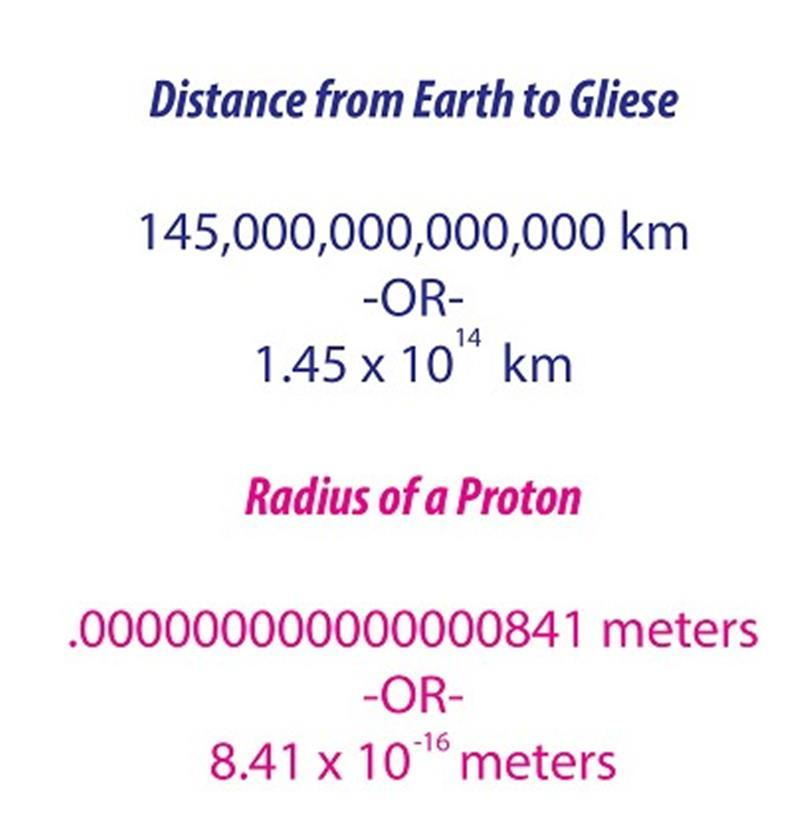What is Scientific Notation and Standard Form?
If you were planning a trip to the nearest multiple-planet solar system to ours (Gliese), maybe to visit our alien neighbors, you would have to travel about 145 trillion kilometers. That's 145,000,000,000,000! Numbers like that can make your eyes cross, just trying to keep track of the zeroes! Here's another one. The latest guess for the radius (distance from the center to the edge) of a proton (the small, positive particle in the nucleus) is 0.841 femtometers. That's .000000000000000841 meters for the radius of that positive particle that defines so much of our world. Standard form is the way numbers normally appear, like the examples above. Most numbers you run into will be in standard form. As you can see, however, standard form can get a little unwieldy, when the numbers get too large or too small.
Huge numbers and incredibly tiny ones can be very difficult to write and keep track of. Imagine trying to do math with numbers that have 25 digits each! You'd get a hand cramp just trying to write out the problem! Fortunately, there's an easier way to work with numbers that are impossibly huge or tiny. Scientific notation is a way to take the most significant digits (the parts of the number that make the most difference), and then use a power of 10 (number of times that 10 is multiplied by itself) to express just how big or small they are. For example, the distance to Gliese and the radius of a proton may be written as shown in Figure 1. Notice that the decimal places have been replaced by powers of 10. Instead of hundreds of trillions, you have 10 to the 14th power. Instead of tenths of quadrillionths, you have 10 to the negative 16th power.
kkk

Figure 1. Distance to Gliese and radius of a proton in standard and scientific notation
That's why they came up with scientific notation. Okay, let's work with changing numbers back and forth, between scientific notation and standard form.